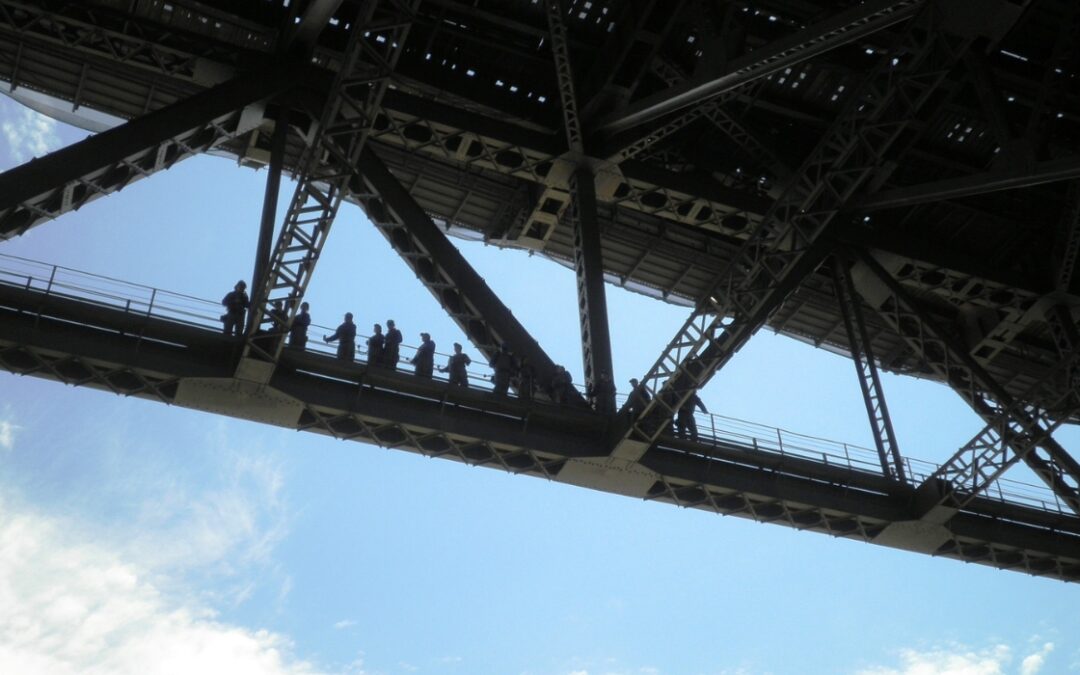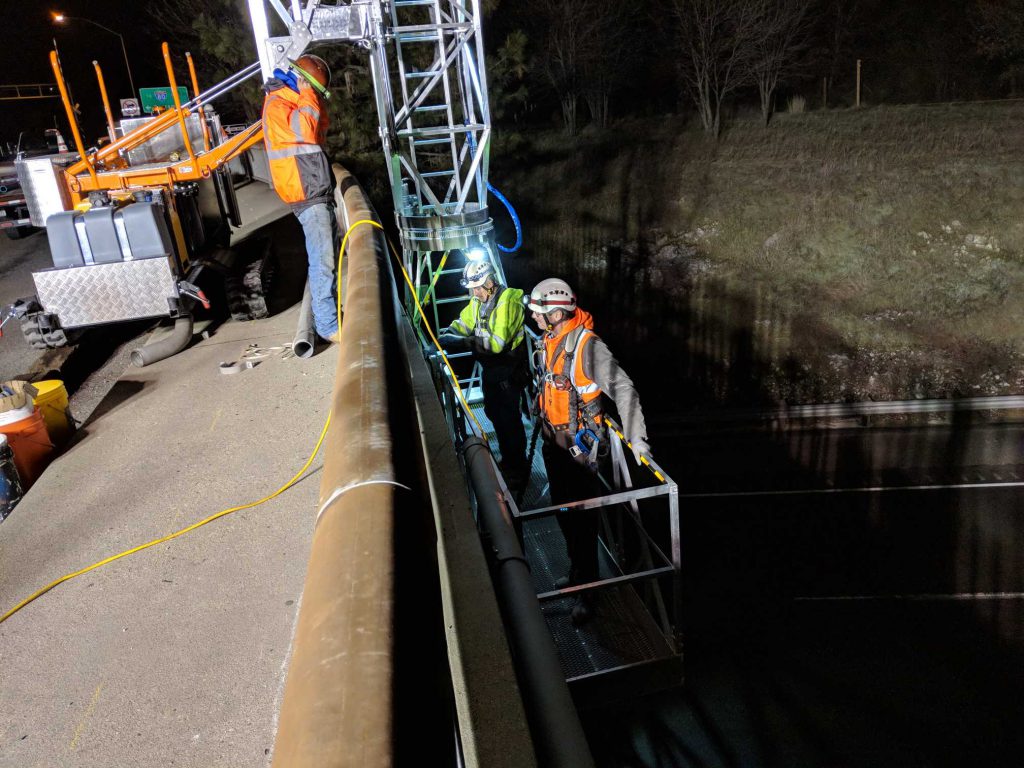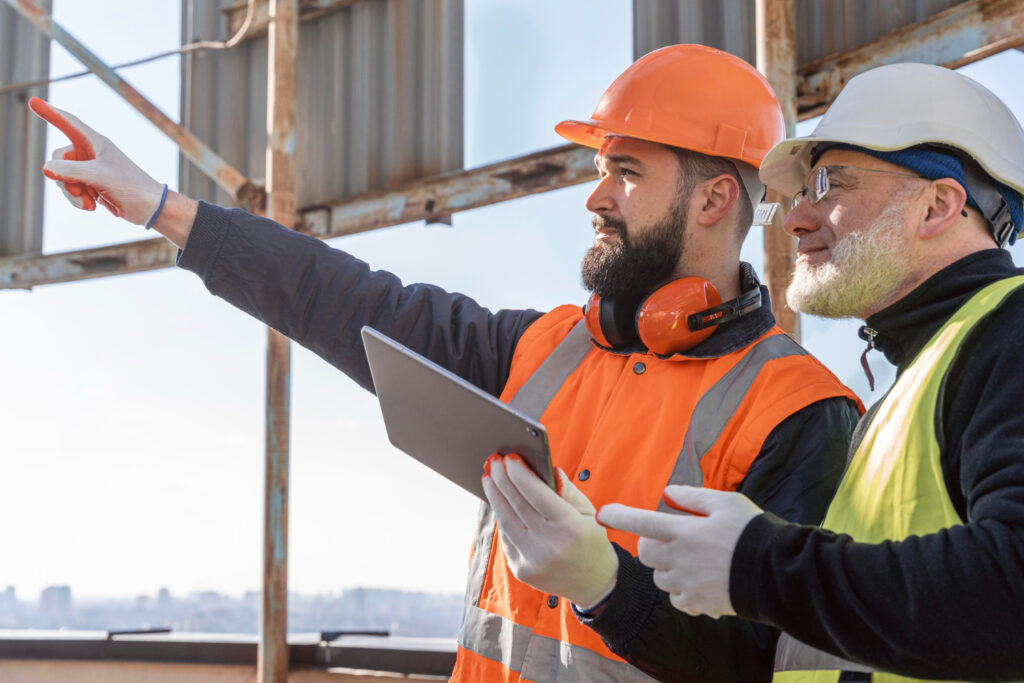The rumble of traffic over a bridge is often taken for granted, a silent testament to the engineering marvel holding hundreds of tons of metal and asphalt against the pull of gravity. But what happens when this marvel is marred by cracks, corrosion, or unexpected forces? This is where bridge inspections come in, acting as a crucial line of defense against disaster. But, knowing when damage necessitates an inspection is not always straightforward.
When One Wrong Move Can Lead to Major Damage and Tragedy
In the frigid darkness of a January morning in Grant County, Wyoming, a 49-year-old semi driver unexpectedly let his truck drift off the left side of Highway 151 on an overpass near the small village of Dickeyville.
The result was detailed in a local news story,
“Highway 151 bridge inspected after harrowing crash involving 2 semis, Grant County authorities say
[H]is 2014 Peterbilt semi… struck a guard rail and continued north, destroying about 150 yards of metal guardrail and wooden posts, Sheriff Nate Dreckman said in a statement. The semi struck the concrete guardrail barrier on the 151 bridge over McAdam Road, and the tractor and trailer split, with the trailer plummeting to the creek bed and road below, striking and destroying a guard rail along McAdam Road, Dreckman said. The trailer struck one of the concrete pylons for the Highway 151 bridge, before coming to rest across McAdam Road. The trailer was loaded with pork belly that scattered throughout McAdam Road and other areas under the 151 bridge.”
The story didn’t end there, however. Another semi was coming up fast on the overpass, as it turned out. The news story added,
“Moments later, a 2020 Kenworth pulling a fully loaded hopper trailer driven by James Gordon,56, of Waverly, Iowa, was heading north when it struck Beckman’s engine with the front driver’s side of the rig, causing the front steering tires to be damaged. Gordon’s vehicle veered right and slammed into the guardrail on the right side of Highway 151, before Gordon safely brought his semi to rest on the shoulder on the right side of the road, Dreckman said.”
In this particular instance, the bridge passed inspection, but the damaged left shoulder in the area of the bridge will remain closed until repairs can be made to the bridge’s barrier systems. While there were no fatalities, the first driver suffered serious but non-life threatening injuries.
Let’s take a look into the complex world of bridge inspections, exploring the various types of damage that warrant immediate attention and the factors that determine the frequency and thoroughness of these assessments.
Early Warning Signs: Identifying Bridge Damage
Bridges, like aging giants, bear the scars of time, weather, and the relentless flow of traffic. But there’s a fine line between natural wear and tear and damage requiring further scrutiny. Here are some red flags that should trigger an immediate bridge inspection (FHWA, 2023):
- Visible cracks: Cracks exceeding a quarter-inch width or exhibiting rapid growth, particularly in critical structural members like beams or trusses, demand immediate attention.
- Deformation or misalignment: Noticeable sagging, leaning, or bowing of bridge components could indicate compromised structural integrity.
- Erosion of concrete or steel: Exposed rebar, spalling concrete, or significant rust on steel elements point to potential loss of strength and require swift evaluation.
- Dislodged or missing components: Loose rivets, bolts, or missing expansion joints pose safety hazards and necessitate immediate inspection.
- Sudden changes in sound or vibration: Increased vibration or unusual noises during traffic flow could indicate internal damage.
Beyond the Obvious: Hidden Threats and Environmental Factors
While visual anomalies are often the first triggers, bridges face invisible threats too. Scour, the erosion of riverbed or foundation soil, can undermine a bridge’s stability. Seismic activity, even minor tremors, can leave hidden cracks or weaken structural connections.
Additionally, harsh weather events like floods, high winds, or extreme temperatures can exacerbate existing damage or introduce new vulnerabilities.
A Stark Reminder: The I-40 Bridge Collapse in Oklahoma
In 2002, the I-40 bridge in Oklahoma tragically collapsed during a routine inspection, sending 14 vehicles and their occupants into the Arkansas River below. The investigation revealed that prior inspections had neglected to identify critical cracks in the bridge’s steel gusset plates, ultimately leading to its catastrophic failure.
This tragic event serves as a stark reminder of the importance of thorough and timely bridge inspections in safeguarding lives and infrastructure.
Types of Bridge Inspections: Tailored to the Threat
Not all bridge inspections are created equal. The type and frequency depend on the severity of the observed damage, the bridge’s design and age, and its importance to local infrastructure. Here’s a breakdown of the different types as detailed by the Federal Highway Administration (FHWA).
- Routine inspections: Conducted every 12-24 months, these focus on identifying minor problems and monitoring existing damage.
- Special inspections: Triggered by specific events like accidents, severe weather, or observed damage, these delve deeper into potential structural issues.
- In-depth inspections: More comprehensive than routine inspections, these employ advanced techniques like ultrasonic testing or X-ray to assess internal damage.
- Fracture-critical member inspections: Conducted on bridges where failure of a single element could be catastrophic, these focus on ensuring the integrity of these vital components.
The Cost of Delay: Why Prompt Inspections Matter
Ignoring bridge damage can have disastrous consequences. Undetected cracks can widen, compromising structural integrity. Scour can weaken foundations, leading to sudden collapse. Postponing inspections can lead to costly repairs, bridge closures, and even loss of life. Prompt action, on the other hand, can save lives, minimize repair costs, and ensure the smooth flow of traffic and goods.
Technology to the Rescue: Innovative Tools for Bridge Inspections
The world of bridge inspections is embracing advanced technology. Drones equipped with high-resolution cameras can capture detailed images of hard-to-reach areas. Sensors embedded in bridge structures can continuously monitor for stress and movement.
3D laser scanning provides precise measurements of bridges, allowing for accurate assessment of deformation and damage. These innovations improve the efficiency and accuracy of inspections, leading to safer bridges and better infrastructure management.
Under Bridge Platforms: Helping You Keep A Vigilant Eye on Our Vital Arteries
Bridge inspections are a vital investment in public safety and economic well-being. By actively monitoring bridges for damage, we can prevent tragedies, extend their lifespan, and ensure the smooth flow of people and commerce. Each crack repaired, each bridge inspected, is a testament to our collective responsibility to safeguard these silent giants that connect us and propel us forward.
Selecting the appropriate under bridge inspection vehicle is a critical determinant of project success. The key lies in tailored capabilities that align with specific structural and terrain requirements, often outweighing mere cost considerations.
Collaborating with a trusted professional ensures a precise match for your project’s unique needs. At Under Bridge Platforms, our commitment extends across the Western States, encompassing California, Washington, and Oregon. Explore our extensive inventory, showcasing top-tier snooper trucks and innovative under bridge access platforms, including the state-of-the-art Truck Mounted Hydra Platform HPT43.
As the exclusive provider of comprehensive under bridge access solutions in California, we take pride in delivering unparalleled customer service. Our enduring partnerships with esteemed clients are a testament to our unwavering dedication.
Feel free to reach out to us today with your specific requirements. Your bridge inspections deserve the best equipment available, and we are here to transform that expectation into reality.




Recent Comments